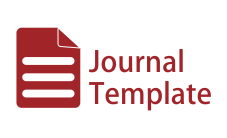Decomposing sociopreneur model supporting national economic recovery through the development of sustainable halal tourism
DOI:
https://doi.org/10.21580/jiemb.2022.4.1.11718Keywords:
halal tourism, Sudut Lombok, sociopreneur.Abstract
This study analyzes the sociopreneur model that can support national economic recovery through sustainable halal tourism. The method used is a case study of a Sociopreneur Community (Sudut Lombok). By conducting in-depth interviews, the author found that Lombok Corner offers the concept of Responsible Tourism and Ecotourism and is supported by several services collaborating with the surrounding community. In addition, Corner Lombok also has several social programs, where a portion of the profits from the business sector, at least 25% of the net profits of investors, will be allocated to social activities to improve the welfare of the people of East Lombok. This business model is expected to be an example for developing Sustainable Halal Tourism in other places to encourage the development of Indonesian halal tourism, whose benefits can also be felt by the surrounding community.
Downloads
References
Albinsaid, G. (2018). Modul Pembinaan Putra Daerah Membangun. Jakarta Selatan: Rumah Kepemimpinan.
Axioma, A. D., & Ardiwijaja, R. (2005). Pengembangan Pariwisata Berkelanjutan: Sebuah Telaah Kebijakan. Jurnal UPH, 8(1).
Battour, M., & Ismail, M. N. (2016). Halal Tourism: Concepts, Practises, Challenges and Future. Tourism Management Perspectives, 19, 150–154. https://doi.org/10.1016/J.TMP.2015.12.008
Battour, M. M., Battor, M. M., & Ismail, M. (2012). The Mediating Role of Tourist Satisfaction: A Study of Muslim Tourists in Malaysia. Journal of Travel and Tourism Marketing, 29(3), 279–297. https://doi.org/10.1080/10548408.2012.666174
Battour, M. M., Ismail, M. N., & Battor, M. (2010). Toward a Halal Tourism Market. Tourism Analysis, 15(4), 461–470. https://doi.org/10.3727/108354210X12864727453304
Bhuiyan, M. A. H., Chamhuri, S., Ismail, S. M., & Islam, R. (2011). Potentials of Islamic Tourism: A Case Study of Malaysia on East Coast Economic Region. Australian Journal of Basic and Applied Sciences, 5(6), 1333–1340.
Bornstein, D. (2006). Mengubah Dunia: Kewirausahaan Sosial dan Kekuatan Gagasan Baru. Yogyakarta: INSIST Press dan Yayasan Nurani Dunia.
BPS Kabupaten Lombok Barat. (2018). NTB, Maret 2018: Persentase Penduduk Miskin Mencapai 14.75 Persen. Retrieved from https://lombokbaratkab.bps.go.id/pressrelease/2018/11/19/23/ntb--maret-2018--persentase-penduduk-miskin-mencapai-14-75-persen.html
crescentrating.com. (2016). Global Muslim Travel Index 2016. Retrieved from https://www.crescentrating.com/reports/mastercard-crescentrating-global-Muslim-travel-index-gmti-2016.html
Departemen Agama RI. (2003). Petunjuk Teknis Pedoman Sistem Produksi Halal. Jakarta: Direktorat Jenderal Bimbingan Masyarakat Islam dan Penyelenggaraan Haji.
DSN-MUI. (2016). Fatwa Dewan Syariah Nasional-Majelis Ulama Indonesia No: 108/DSN-MUI/X/2016 tentang Pedoman Penyelenggaraan Pariwisata Berdasarkan Prinsip Syariah. Jakarta.
El-Gohary, H. (2016). Halal Tourism, Is It Really Halal? 19, 124–130. https://doi.org/10.1016/j.tmp.2015.12.013
Fitriani, E. (2017). 2019, Pariwisata Sumbang PDB Terbesar. Retrieved from https://investor.id/industry-trade/162269/2019-pariwisata-sumbang-pdb-terbesar
Gubernur Nusa Tenggara Barat. (2016). Peraturan Daerah Provinsi Nusa Tenggara Barat Nomor 2 Tahun 2016 Tentang Pariwisata Halal. Mataram. Retrieved from https://jdih.ntbprov.go.id/sites/default/files/produk_hukum/LD Perda No 2 Th 2016.pdf
Hamdan, H., Issa, Z. M., Abu, N., & Jusoff, K. (2012). Purchasing Decisions among Muslim Consumers of Processed Halal Food Products. Journal of Food Products Marketing, 19(1), 54–61. https://doi.org/10.1080/10454446.2013.724365
Henderson, J. C. (2016). Halal Food, Certification and Halal Tourism: Insights from Malaysia and Singapore. Tourism Management Perspectives, 19, 160–164. https://doi.org/10.1016/J.TMP.2015.12.006
Hulgård, L. (2010). Discourses of Social Entrepreneurship: Variations of the same Theme? (No. 10/01).
Indonesia.go.id. (2018). 4 Geopark Indonesia yang Diakui UNESCO. Retrieved May 30, 2022, from https://indonesia.go.id/kategori/budaya/312/4-geopark-indonesia-yang-diakui-unesco
Jaelani, A. (2017). Industri Wisata Halal di Indonesia: Potensi dan Prospek. Munich Personal RePEc Archive, 1–20. Retrieved from https://mpra.ub.uni-muenchen.de/76237/1/MPRA_paper_76237.pdf
Jafari, J., & Scott, N. (2014). Muslim World and Its Tourisms. Annals of Tourism Research, 44(1), 1–19. https://doi.org/10.1016/J.ANNALS.2013.08.011
MasterCard & CrescentRating. (2016). Global Muslim Travel Index 2016. Retrieved from file:///C:/Users/User/Downloads/EbpZGqie_GMTI_2016_20161109-1.pdf
Mohsin, A., Ramli, N., & Alkhulayfi, B. A. (2016). Halal Tourism: Emerging Opportunities. Tourism Management Perspectives, 19, 137–143. https://doi.org/10.1016/J.TMP.2015.12.010
Rahman, R. A., Rezai, G., Mohamed, Z., Shamsudin, M. N., & Sharifuddin, J. (2013). Malaysia as Global Halal Hub: OIC Food Manufacturers’ Perspective. Journal of International Food & Agribusiness Marketing, 25(SUPPL1), 154–166. https://doi.org/10.1080/08974438.2013.809672
Samori, Z., Md Salleh, N. Z., & Khalid, M. M. (2016). Current Trends on Halal Tourism: Cases on Selected Asian Countries. Tourism Management Perspectives, 19, 131–136. https://doi.org/10.1016/J.TMP.2015.12.011
Widagdyo, K. G. (2015). Analisis Pasar Pariwisata Halal Indonesia. Tauhidinomics: Journal of Islamic Banking and Economics, 1(1), 73–80. https://doi.org/10.15408/thd.v1i1.3325
Wisatadilombok. (2015). Pulau Lombok Raih Predikat Tujuan Wisata Halal Terbaik di Dunia. Retrieved May 30, 2022, from https://www.wisatadilombok.com/2015/10/pulau-lombok-raih-predikat-tujuan.html
Yusof, S. M., & Shutto, N. (2014). The Development of Halal Food Market in Japan: An Exploratory Study. Procedia - Social and Behavioral Sciences, 121, 253–261. https://doi.org/10.1016/J.SBSPRO.2014.01.1126
Downloads
Published
Issue
Section
License
Authors who publish with this journal agree to the following terms:
Authors retain copyright and grant the journal right of first publication with the work simultaneously licensed under a Creative Commons Attribution-ShareAlike 4.0 International License that allows others to share the work with an acknowledgement of the work's authorship and initial publication in this journal.
Authors are able to enter into separate, additional contractual arrangements for the non-exclusive distribution of the journal's published version of the work (e.g., post it to an institutional repository or publish it in a book), with an acknowledgement of its initial publication in this journal.
Authors are permitted and encouraged to post their work online (e.g., in institutional repositories or on their website) prior to and during the submission process, as it can lead to productive exchanges, as well as earlier and greater citation of published work (See The Effect of Open Access).


